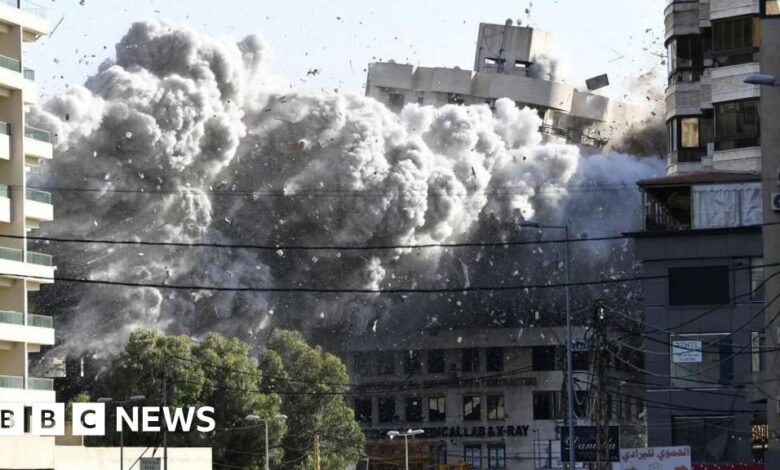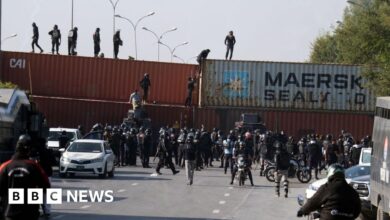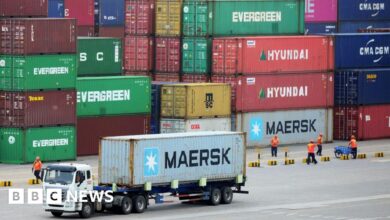Questions about the future of Hezbollah after the ceasefire

The streets were dark and the traffic was packed. People walked, carrying bags of belongings, not knowing where they were going but certain that they could not stay.
This was the scene Tuesday in Nuweiri, central Beirut, shortly after the Israeli military issued an evacuation warning, the first for these areas.
We were trying to visit the site of an Israeli airstrike a few hours earlier, in the afternoon, that had come without warning, flattening a building and killing at least seven people. But we can’t get there.
The crowd was leaving and men on motorbikes stopped us from moving saying it wasn’t safe.
A few minutes later, we heard more explosions from more attacks. And for many hours the night in Beirut went like that. Many explosions. Some are far away; others are closer.
Gunfire rang out more warnings, urging people to seek safety. All this, with the constant sound of Israeli drones flying overhead.
The dramatic escalation comes as the country awaits Israel’s decision on a ceasefire agreement, its main hope for ending more than a year of conflict with Hezbollah, the powerful movement backed by Iran.
In the meantime, Israel launched its heaviest bombardment of Beirut during the conflict.
Within two minutes, immediately after the strike on Nuweiri, warplanes attacked 20 targets in the city’s southern suburbs, known as Dahieh, where Hezbollah is headquartered in the city.
The Israel Defense Forces (IDF) said the targets were facilities used by Hezbollah and that a wave of attacks echoed across the city.
Now that the ceasefire has been officially announced, many questions remain.
The war has devastated Lebanon, where more than 3,700 people have been killed since the start of hostilities in October 2023 and one million residents have been displaced in areas where Hezbollah has a strong presence.
The World Bank estimates damages and economic losses at $8.5 billion. Recovery will take time and no one seems to know who will pay for it.
According to the agreement, thousands of Lebanese soldiers will be deployed in the south, after Israeli forces and Hezbollah fighters withdraw. It remains unclear how they will be deployed.
The military complains that it does not have enough resources – money, manpower and equipment – to carry out its duty.
But the issue is not just the funding, which will likely come from some of Lebanon’s international allies. Will the Lebanese army confront Hezbollah if necessary?
That would pit Lebanese against Lebanese, which is always a danger in a country with deepening sectarian divisions.
One diplomat told me that the Lebanese government seemed to have accepted that things had to change. There appears to be the political will to do so.
Hezbollah was also devastated. Many of its leaders were killed, including longtime leader Hassan Nasrallah, while its infrastructure was heavily damaged. What it will look like after the war is another unknown.
The group has been severely weakened, some might say humiliated, but it has not been destroyed. In Lebanon, it is more than just a militia: it is a political party represented in Parliament and a social organization, with significant support among Shia Muslims.
Its opponents will likely see this as an opportunity to limit its influence. Before the conflict, Hezbollah was often described as a state within a state in Lebanon.
And for months, those outside Hezbollah’s support base said the group had dragged the country into a war that was not in their interests.
This agreement could end the conflict with Israel. But many in Lebanon fear a new internal conflict could occur.




